Rank Species | Genus Coccoloba Higher classification Coccoloba | |
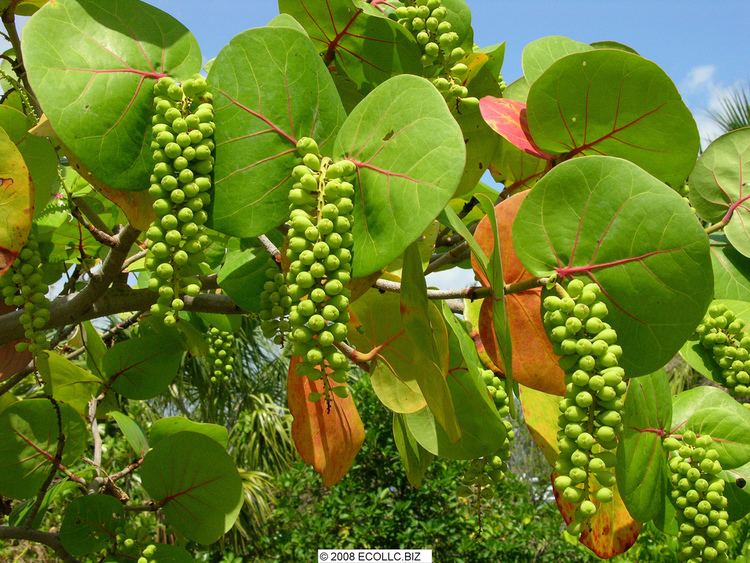 | ||
Similar Coccoloba, Caulerpa lentillifera, Polygonaceae, Conocarpus erectus, Coccoloba diversifolia | ||
Coccoloba uvifera seagrape
Coccoloba uvifera is a species of flowering plant in the buckwheat family, Polygonaceae, that is native to coastal beaches throughout tropical America and the Caribbean, including southern Florida, the Bahamas, the Greater and Lesser Antilles, and Bermuda. Common names include seagrape and baygrape.
Contents
- Coccoloba uvifera seagrape
- Seagrape trees coccoloba uvifera baygrape
- Cultivation and propagation
- Uses
- Classification
- References
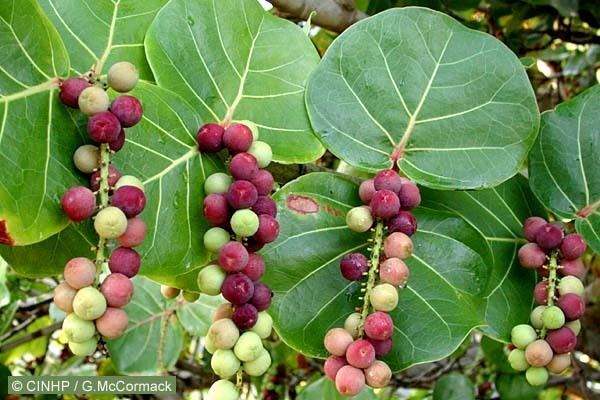
In late summer, it bears green fruit, about 2 cm (0.79 in) diameter, in large, grape-like clusters. The fruit gradually ripens to a purplish color. Each contains a large pit that constitutes most of the volume of the fruit.
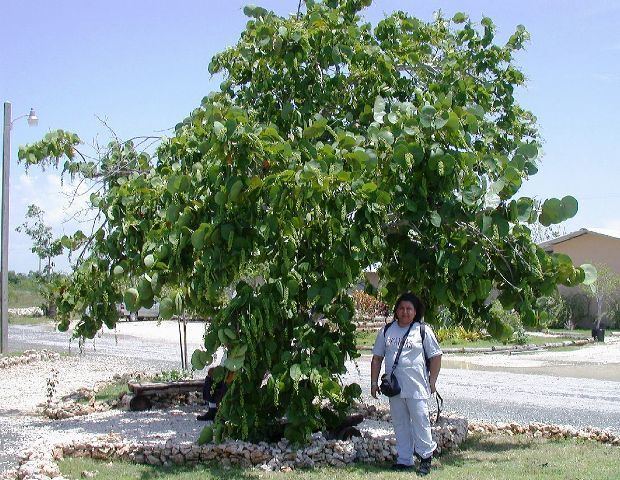
Seagrape trees coccoloba uvifera baygrape
Cultivation and propagation

Capable of surviving down to about 2°C, the tree is unable to survive frost. The leaves turn reddish before withering. Its seeds must be planted immediately, for unlike most plants, they cannot withstand being stored for future planting.

C. uvifera is wind resistant, moderately tolerant of shade, and highly tolerant of salt, so it is often planted to stabilize beach edges; it is also planted as an ornamental shrub. The fruit is very tasty, and can be used for jam or eaten directly from the tree.
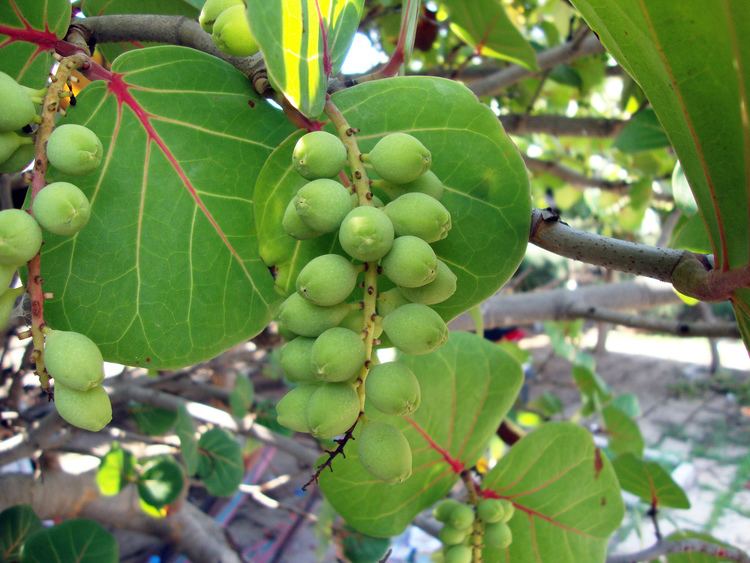
Sea grape is a dioecious species, that is, male and female flowers are borne on separate plants, and cross-pollination is necessary for fruit to develop. Honey bees and other insects help pollinate these plants; male and female plants can be distinguished by the appearance of their flowers, as males usually show dead flower stalks.
Uses
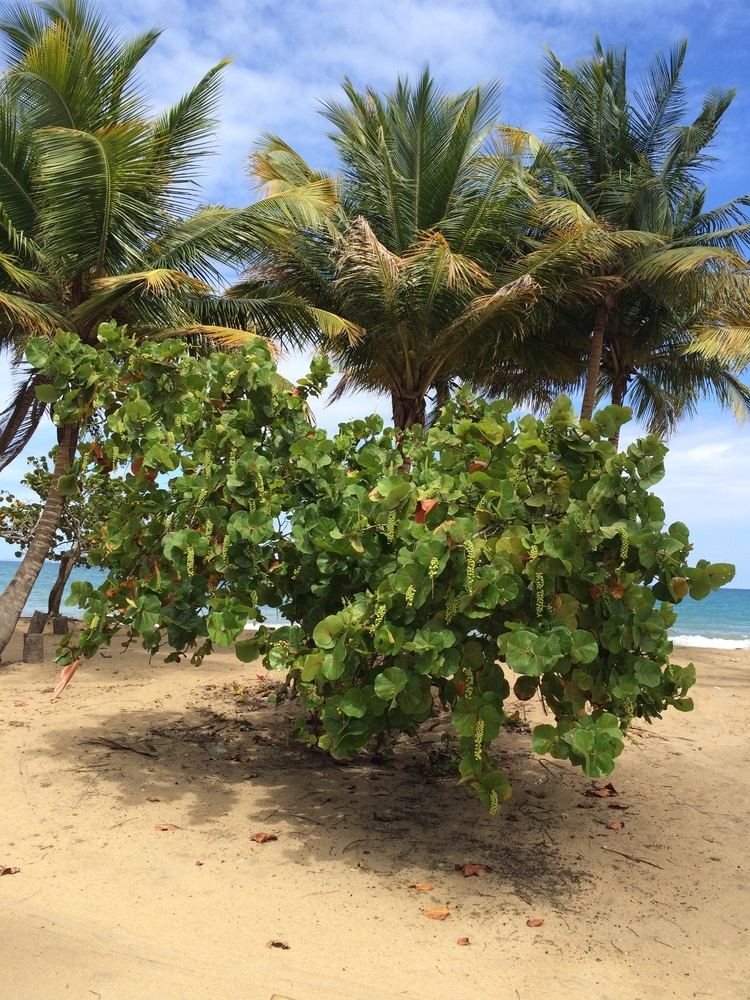
C. uvifera is most often used in landscaping, as it is a popular ornamental plant in south Florida yards, as well as a dune stabilizer and coastal windbreak. Tall sea grape plants are used to make a light barrier between coastlines to protect sea turtles.
The wood of the sea grape is sometimes used for firewood, making charcoal, and even cabinetry.
The reddish fruits of the sea grape may be eaten raw, cooked into jellies and jams, or fermented into sea grape wine. Sea grape wine may also be fermented into sea grape vinegar, which is also useful in cooking.
The sap of the sea grape is used in the West Indies and Jamaica for dyeing and tanning of leather.
It is sometimes used as a subject for bonsai.
Classification
The first botanical names of the plant were assigned in 1696 by Hans Sloane, who called it Prunus maritima racemosa, "maritime grape-cluster Prunus", and Leonard Plukenet, who named it Uvifera littorea, "grape-bearer of the shore", both of which names reflect the European concept of "sea-grape", expressed in a number of languages by the explorers of the times. The natives viewed it as a large mulberry.
The first edition of Linnaeus's Species Plantarum (1753), based on Plukenet, assigned the plant to Polygonum uvifera and noted flores non vidi, "I have not seen the flowers." Subsequently, Patrick Browne, The Civil and Natural History of Jamaica (1756) devised Coccoloba, "red-leaf", for it. Relying on Browne, Linnaeus' second edition (1762), changed the classification to Coccolobus uvifera, citing all the other names.
